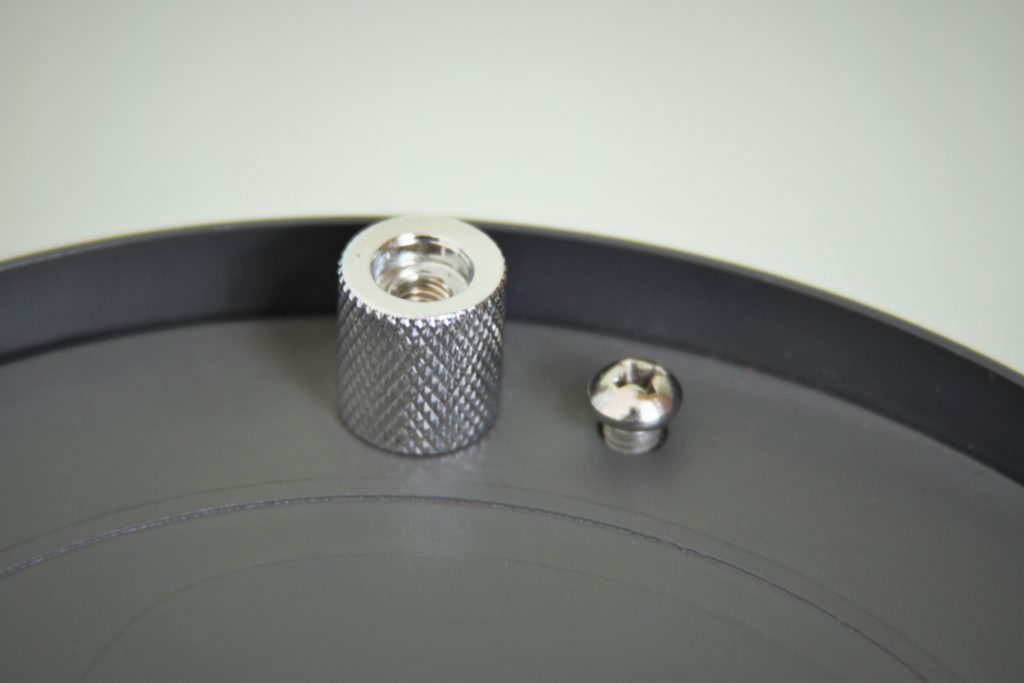Accurate collimation will give the optimal resolution (sharpness or focus) and maximum light gathering for your stargazing sessions.
Collimation aligns the optics within the telescope to ensure that light from the primary mirror is reflected fully, without distortion, and that the path of light from the observer, through the secondary to the primary and back again is correctly aligned.
If you have not followed the full collimation guide from the start, do check that your secondary mirror is aligned.
This guide is written for the Celestron AstroMaster 130EQ, but the same principals apply to all reflector telescopes.
Primary mirror manual collimation guide
Time needed: 15 minutes
Follow these simple steps to manually collimate the primary mirror using a collimation cap.
- Locate and slacken the primary collimation locking screws
Locate the primary mirror collimation locking screws – three silver, rounded, crosshead screws next to each collimation thumbscrew at the closed end of the optical tube. Slacken these very slightly – only a half a turn.


- Using a collimation cap observe the reflections in the secondary mirror
Use a collimation cap to keep your eye central to the focus tube and carefully observe the reflections. Following the secondary mirror adjustments, you should have a view like below.


- Adjust collimation thumbscrews until aligned
Unless already correct, adjust the primary mirror collimation thumbscrews until the hole in the collimation cap appears perfectly central to the donut of the centre spot, as shown below. Do not overtighten or loosen the thumbscrews – they should remain finger tight throughout their travel.


- Re-tighten the collimation locking screws
Once aligned, tighten the locking screws while checking collimation remains correct – minor tweaks may be required as you secure these.
Finishing up
Enjoy your freshly collimated telescope – it is worth performing a star test (“field collimation”) to help you further optimise your collimation. Why not check out my other guides – or polar align your telescope for a great evening of stargazing.
